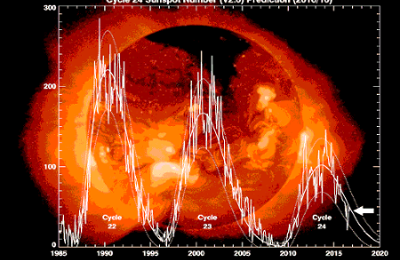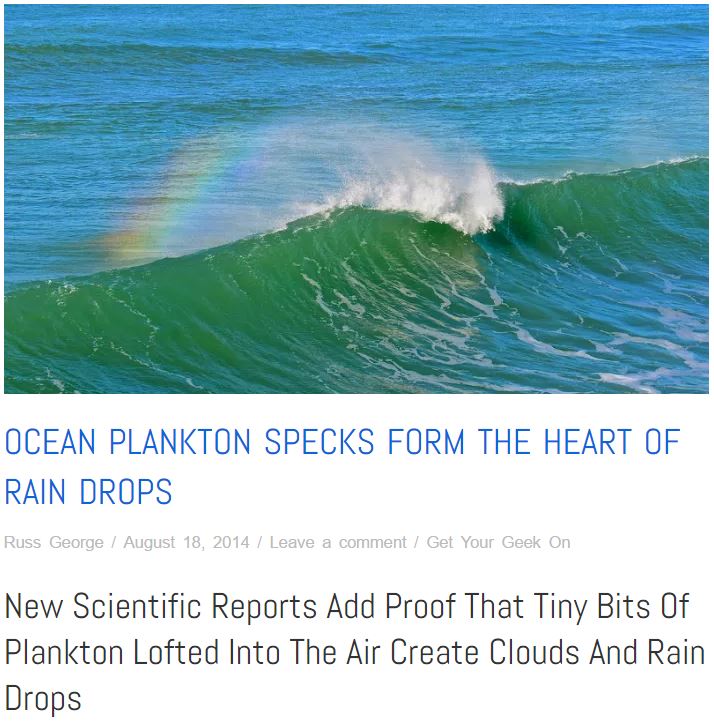
Global Photosynthesis Emergency As Sun Forecast To Dim For 20+ Years
Recent Astrophysical Reports Advise That By 2020 Sun Will Become Dimmer And Remain Dim for 20-50 Years
The physicists warning of the global cooling effect this solar ‘grand minimum’ seem to be utterly unconcerned about the resulting loss the suns energy with regard to powering plant life, photosynthesis.
Plantlife on the blue planet presently manages nearly 1000 billion tonnes of CO2 every year while all of human emissions are less than 20 billion tonnes per year.
The predicted 5%-10% decline in photosynthesis will result in up to 5 times more CO2 impact than human emissions.
Every 11 years there is a low point in solar activity and for the past several of these cycles there is a troubling trend. That trend predicts another periodic solar cycle, though a rarer event, called a “grand minimum.” They happen only every few centuries. Experts tracking this disturbing trend now forecast the sun is expected to enter a ‘grand minimum’ and dramatically dim perhaps as soon as 2020. These grand minimum periods of solar dimming last for 50 years. The last grand-minimum event — a disruption of the sun’s 11-year cycle of variable sunspot activity — happened in the mid-17th century. It has been named the ‘Maunder Minimum’, and prevailed between the years 1645 and 1715.
Sunspot activity was high in 2014 but has been dipping ever since, as the sun moves toward the low-end of its 11-year cycle, known as the normal solar minimum. More worrying is a pattern of ever-decreasing sunspots over recent solar cycles resembles patterns from the past that preceded grand-minimum events. This similarity suggests that another grand minimum event may be fast approaching.
While a curiosity for astronomers this could spell disaster for plant life.
Photosynthesis by plant life on land and especially in the oceans are the principal means that nature uses to regulate our climate. Plants directly breathe in the ‘greenhouse gas” CO2 (carbon dioxide) and using the power they get from sunlight convert that CO2 into more plant life. That plant life is what feeds all of life on this blue planet. Less sunlight is going to be a base of the food chain problem.

Ocean plant life, the phyto-plankton of ocean pastures, make our clouds and rain. The loss of 40-50% of ocean pasture plankton has already resulted from our sins of emission. – click to read more
But more importantly, with regard to our climate, plants, especially those in the oceans, control our climate. They not only consume CO2 that are the principal source of microscopic aerosol chemicals that form the heart of every raindrop and every cloud. You already know these ‘aerosol chemicals well, when you smell the grass or a flower or forest you are smelling plant aerosols, every sailor knows that the smell of the ocean will have changed dramatically for hundreds of miles around when one sails near an ocean pasture that is in bloom.
This recent team of scientists has estimated how intense such a solar dimming event might be, by analyzing close to 20 years of data recording radiation output from stars that follow cycles similar to that of our sun. Solar radiation output typically drops during a normal solar minimum such as we are now in, though only 5% or less (not enough to disrupt climate patterns on Earth).
However, sunlight during a ‘grand minimum’ plummets by an additional 7+ percent, the researchers wrote in the study. As a result, air temperatures on Earth’s surface are expected to cool by as much as several tenths of a degree Fahrenheit. Not a great amount of global cooling the boffins advise. But what about the 10% diminished photosynthesis on that topic they did not comment.
Oceans Make The Majority Of The World’s Oxygen
A major paper in the Journal Nature in 2017 reported on a stunning observed 2% decline in ocean oxygen in just 50 years. They went on to state that it will plummet to a 7% loss before the end of this century!
That report, which was a massive synthesis of ocean science, showed the 2% decline in the amount of dissolved oxygen in all of the world’s oceans between 1960 and 2010. The loss, however, is worse than this global average in some oceans. The largest overall volume of oxygen was lost in the Pacific ocean but as a percentage, the decline greatest in the Arctic Ocean.

Ocean oxygen decline closely follows the collapse of ocean pasture plankton blooms. – click to read more
Remarkably while ‘climate change,’ aka global warming, has long been touted as predicting such a decline in ocean oxygen due to ocean warming the report shows that a mere 15% of the decline is due to the warming effects that reduce the capacity of ocean water to hold oxygen. There is something far more fundamentally powerful that is causing the oceans to lose their life-sustaining oxygen. Indeed collapse of oxygen production is the culprit.
As much as it has been the fashion of terrestrial science to report that the ‘lungs of the earth’ are its terrestrial rainforests which are said to make half of the oxygen we breathe, the fact is that the oceans produce the vast majority of our oxygen. 8 out of every 10 breaths you breathe comes from ocean plant-life and photosynthesis. Numerous scientific papers have revealed that ocean photosynthesis is down by at least 40% in the past 50 years. All of that lost photosynthesis was producing prodigious amounts of ocean oxygen that is now clearly seen to be missing. And with the sun dimming things are going to get worse very quickly.

As ocean pasture plankton perish their loss eliminates the world’s major source of oxygen and plankton cooling – click to read more
Ocean phytoplankton evolved to not only produce more plankton and oxygen but also to create and sustain its environment that it needs to survive. Ocean pasture plankton as the principal source of cloud nucleating particles keep this Blue Planet in the Goldilock’s Zone of our solar system. The earth is just a wee bit too far into the hot zone of our sun and the phytoplankton clouds have evolved the means to provide us with cooling shade so that we are neither tooo hot nor tooo cold, but ahhh just right.
The new Solar Dimming reports findings will help scientists create more accurate climate model simulations, to improve their understanding of the complex interplay between solar activity and climate on Earth.
The recent solar dimming findings were published online Dec. 27, 2017, in The Astrophysical Journal Letters.








